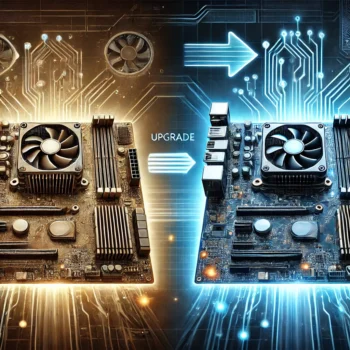Recently, I received a replacement for one of my Turing Pi 2.4 boards that had a faulty slot. The replacement is the new Turing Pi 2.5, which brings several refinements over the previous version. While the Turing Pi 2.4 was already a solid board, the 2.5 revision introduces enhancements that improve overall usability, control, and hardware efficiency.
Key Improvements in Turing Pi 2.5
The Turing Pi 2.5 board comes with multiple upgrades over the 2.4 version, some of which I find particularly useful. Here are the most notable changes:
1. RTC Resistor Fix Pre-Applied
A key improvement in this revision is the RTC resistor fix, which was previously a manual soldering task for users experiencing issues. The details of this fix are documented in the Turing Pi help guide, but with Turing Pi 2.5, this is now resolved out of the box.
2. PWM Case Fan Header for Better Cooling Control
Another significant change is the PWM case fan header, replacing the older three-pin fan connector. This allows for better fan speed control, making it easier to manage cooling and noise levels dynamically rather than running at a fixed speed.
3. USB-C Power Input for Improved Power Management
The USB-A power adapter has been swapped for a USB-C connector, a much-welcomed change. This provides better power delivery, simplifies connectivity, and aligns with modern power standards.
4. Other Notable Changes
- Minor PCB layout optimizations for better stability.
- Refinements to overall component quality, improving durability.
- More robust USB and network connectivity to enhance reliability.
- A full list of changes can be found in the official Turing Pi 2.5 announcement.
My Current Cluster Setup: 2.4 vs. 2.5
With the arrival of the Turing Pi 2.5 board, I now have two clusters in my setup:
- Cluster1 – Runs on the Turing Pi 2.4 board.
- DevTest – Runs on the Turing Pi 2.5 board.
Both clusters are populated with four 16GB RK1 compute modules, providing solid performance for various workloads.
Why Maintain Two Clusters?
I find it extremely useful to have a dedicated DevTest cluster. This setup allows me to:
- Test upgrades before applying them to my primary cluster.
- Experiment with new software configurations without affecting production workloads.
- Wipe and rebuild as needed, ensuring I have a safe space to try different Kubernetes and automation configurations.
While the Turing Pi 2.5 board brings some welcomed enhancements, I don’t necessarily use most of the upgrades daily. However, the PWM case fan control and USB-C power are standout features that improve usability.
Final Thoughts
For those already using a Turing Pi 2.4, an upgrade isn’t strictly necessary unless you need the specific improvements. However, if you’re setting up a new cluster or replacing a board, the Turing Pi 2.5 is an excellent choice.
Having two clusters has been a game-changer for my workflow, providing a stable production environment and a flexible testing space. I’ll continue to explore different use cases, and who knows—perhaps I’ll refine my setup even further in the future!
If you’re running a Turing Pi cluster, I’d love to hear about your setup and experiences. Feel free to leave a comment below!

